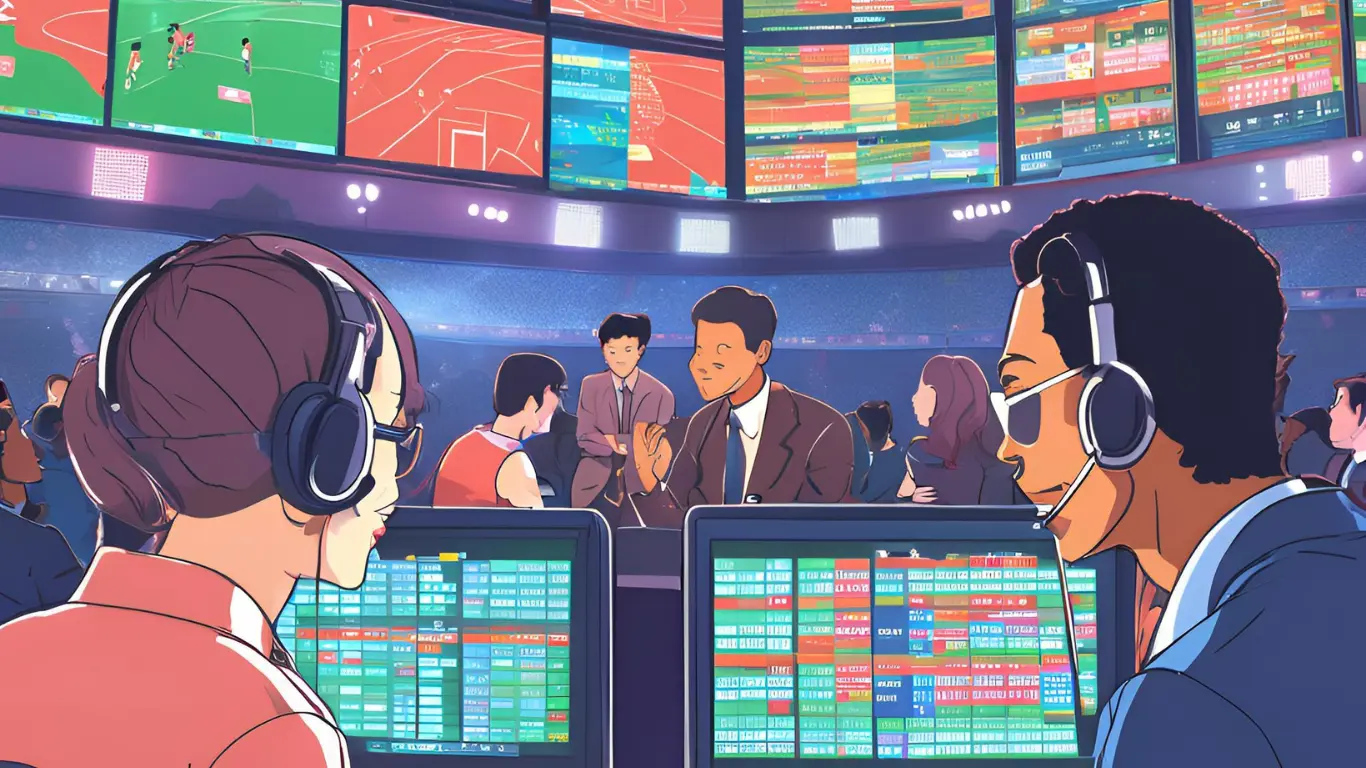In the shadows of Wall Street and the roar of packed stadiums lies a shared battlefield – markets governed by probability, emotion, and edge. Whether you’re trading S&P futures or betting on the Lakers to cover the spread, the same invisible mechanics are at play. This isn’t a metaphor. It’s math.
This article unpacks the hidden parallels between sports betting and global financial markets, revealing how sportsbooks function like liquidity providers, how line movement resembles order book dynamics, and why sports bettors increasingly operate like quant traders.
Bookmakers as Liquidity Providers
| Role | Financial Market | Sports Betting |
|---|---|---|
| Market Maker | Sets bid/ask spreads | Sets odds (prices) |
| Liquidity Provider | Absorbs order flow | Accepts bets at margin |
| Arbitrage Opportunity | Spread inefficiencies | Mispriced odds across books |
| Price Movement | Based on supply/demand & news | Based on betting volume & injury/news |
Just like financial market makers profit from spread differentials, sportsbooks earn from the vig (margin). They balance action across outcomes to maintain a net-zero risk profile, just like liquidity providers in finance seek delta-neutrality.
🧩 Key takeaway: Bookmakers don’t bet against you — they balance books. Your opponent? The crowd.
Arbitrage, Edge & High-Frequency Models
Hedge funds and elite bettors both seek mispricings.
- In finance: Price dislocations across exchanges = arbitrage
- In betting: Line differences across sportsbooks = surebets
Enter the bots. AI-driven sports betting bots now scrape multiple sportsbooks, finding fleeting opportunities in real-time—much like HFT (high-frequency trading) algorithms scanning the FX or equity markets for basis-point spreads.
🔍 Microseconds matter. This is the domain of syndicates, machine-learning models, and auto-bettors. Emotion doesn’t enter the equation.
Line Movement = Market Depth
When betting volume surges in one direction, sportsbooks adjust the odds—mirroring the way order books shift on a trading exchange.
| Trigger | Market Reaction |
|---|---|
| Major injury news | Spread swings (e.g. -2.5 to +1.5) |
| Sharp bettor syndicate fires max bet | Line sharpens |
| Public money floods in pre-game | Juice shifts or limits tighten |
This dynamic pricing is pure supply and demand. The closing line is often the most efficient line—just as end-of-day prices in financial markets often reflect peak information absorption.
Volatility & Risk Management
In sports betting, just as in trading, managing variance is essential:
- Traders use stop-losses and risk-reward ratios.
- Bettors apply Kelly criterion, unit sizing, and EV (expected value) principles.
📉 Variance isn’t failure. It’s noise.
Understanding volatility—and protecting your bankroll from it—is what separates a gambler from a professional.
Betting Psychology = Market Psychology
Markets are emotional. So is betting. Behavioral economics plays a role in both:
- Recency bias causes traders to overreact to recent market trends; bettors overbet after a winning streak.
- Loss aversion leads to holding onto bad trades… or chasing a losing parlay with another.
- Herd behavior explains pump-and-dumps—and betting on the World Cup favorite just because everyone else is.
In both spaces, the biggest edge lies in overcoming your own brain.
Crypto Betting as the New Frontier
The rise of Web3 betting platforms like SmartContractBets.xyz introduces another Wall Street parallel: DeFi betting markets as decentralized exchanges.
- Smart contracts = trustless settlement
- Liquidity pools = underwriters of risk
- Tokenized odds = dynamic pricing via demand curves
It’s not just betting—it’s on-chain financial engineering.
Betting is Trading
Whether you’re shorting the Nasdaq or betting on a UFC underdog, the fundamentals are strikingly similar:
- Risk-reward ratio matters
- Price is not value
- Emotion is the enemy
- The edge is everything
In the end, a disciplined bettor is nothing less than a micro-market strategist—playing a game of margins, edge, and volatility. And in this invisible market, the sharpest minds don’t just play—they compound.
Key Takeaways
- Bookmakers = liquidity providers; they don’t gamble, they balance.
- Advanced bettors use expected value, variance control, and risk-adjusted models.
- Line movement is driven by real-time supply-demand signals.
- Both markets and sportsbooks reward rational behavior over emotion.
- Web3 is blurring the lines between finance and betting even further.







